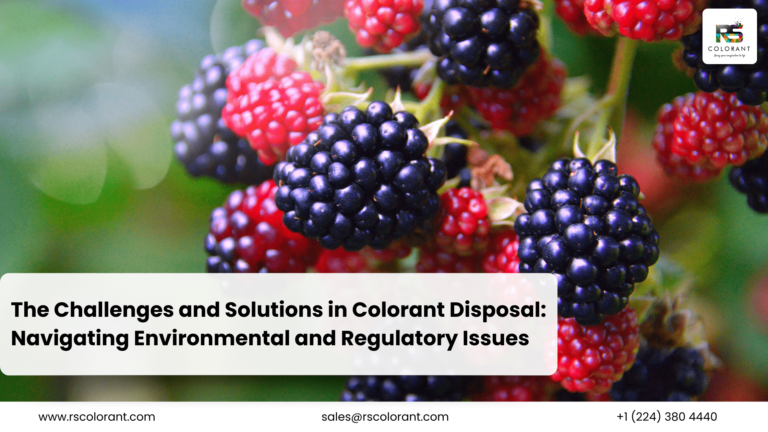The Role of Colorants in the Plastic Industry
In the vibrant world of plastics, color plays a crucial role. It’s not just about aesthetics; colorants influence everything from brand identity to functionality. But what exactly are these colorants, and how do they shape the plastic industry? Let’s dive in and explore the fascinating world of plastic colorants.
Understanding Colorants
What Are Colorants?
Colorants are substances that impart color to a material. In the plastic industry, they are integral to the production process, providing the desired hues and shades. There are various types of colorants, including pigments and dyes, each with unique properties and uses.
Historical Background
The use of colorants in plastics dates back to the early 20th century. Initially, natural dyes were used, but as the industry evolved, synthetic pigments and dyes became more prevalent. Today, advancements in technology have led to a wide array of colorants that can achieve almost any color imaginable.
Types of Colorants Used in Plastics
Organic Pigments
Organic pigments are carbon-based molecules known for their bright, vivid colors. They are used in a variety of applications, from packaging to consumer goods. These pigments are popular for their color strength and versatility.
Inorganic Pigments
In contrast, inorganic pigments are derived from mineral compounds. They tend to be more stable and durable than organic pigments, making them ideal for outdoor applications where resistance to weathering is essential.
Dyes
Dyes differ from pigments in that they dissolve in the plastic material, providing a transparent color. They are often used in applications where clarity is crucial, such as in clear packaging or automotive parts.
Application Methods for Colorants
Masterbatch
Masterbatch is a concentrated mixture of pigments or dyes encapsulated in a carrier resin. This method ensures consistent color throughout the plastic product. While it offers excellent dispersion, it can be more expensive than other methods.
Dry Blending
Dry blending involves mixing dry colorants directly with the plastic resin. It’s a cost-effective method, but achieving uniform color can be challenging, especially in large production runs.
Liquid Colorants
Liquid colorants are added to the plastic in liquid form, offering precise control over the color. They are often used in processes where exact color matching is critical.
Benefits of Using Colorants in Plastics
Aesthetic Appeal
One of the most obvious benefits of using colorants is the aesthetic appeal they provide. Vibrant, attractive colors can make products stand out on the shelf, catching the consumer’s eye and driving sales.
Brand Differentiation
Color is a powerful tool for brand differentiation. Companies use specific colors to create a unique identity, making their products instantly recognizable in a crowded market.
Functional Advantages
Beyond aesthetics, colorants can enhance the functionality of plastic products. For example, certain pigments can provide UV resistance, protecting the product from sun damage.
Challenges in Using Colorants
Consistency Issues
Achieving consistent color across different batches of plastic can be challenging. Factors such as raw material quality and processing conditions can affect the final color, requiring strict quality control measures.
Cost Considerations
Balancing the cost of colorants with their quality is a common challenge. While high-quality colorants can be expensive, they often provide better performance and durability.
Environmental Concerns
The environmental impact of colorants is a growing concern. Many traditional colorants are not biodegradable and can contribute to pollution. However, there is a push towards developing eco-friendly alternatives.
Innovations in Plastic Colorants
Sustainable Colorants
With the increasing focus on sustainability, the development of eco-friendly colorants is on the rise. These colorants are designed to minimize environmental impact, often made from renewable resources or biodegradable materials.
Advanced Color Matching
Technology has revolutionized color matching, making it possible to achieve precise, consistent colors. Advanced spectrophotometers and computer software allow manufacturers to match colors with incredible accuracy.
Special Effects
Special effect colorants, such as metallic or pearlescent pigments, can add a unique look to plastic products. These effects are often used in high-end consumer goods and packaging to create a premium appearance.
The Future of Colorants in the Plastic Industry
Trends to Watch
The plastic colorants industry is continuously evolving. Trends such as smart colorants, which change color in response to environmental conditions, are gaining popularity. These innovations offer new possibilities for product design and functionality.
Market Growth
The demand for plastic colorants is expected to grow steadily in the coming years. Factors driving this growth include the increasing use of plastics in various industries and the need for innovative, eye-catching products.
Regulatory Impact
Environmental and safety regulations are shaping the future of the colorants industry. There is a growing emphasis on developing safer, non-toxic colorants that comply with stringent regulations.
Conclusion
Colorants play a vital role in the plastic industry, influencing everything from product aesthetics to functionality. While there are challenges to overcome, ongoing innovations and a focus on sustainability are driving the industry forward. As we look to the future, the role of colorants in creating vibrant, functional, and eco-friendly plastic products will only continue to grow.
FAQs
What are the most common types of colorants used in plastics?
The most common types of colorants used in plastics are organic pigments, inorganic pigments, and dyes. Each type has unique properties that make them suitable for different applications.
How do colorants affect the recycling process of plastics?
Colorants can complicate the recycling process, as different colors need to be sorted and processed separately. Additionally, some colorants may not be compatible with recycling processes, requiring the development of recyclable alternatives.
What are the latest innovations in plastic colorants?
Recent innovations in plastic colorants include sustainable, eco-friendly colorants, advanced color matching technologies, and special effect pigments that provide unique finishes such as metallic or pearlescent effects.
Can colorants be harmful to the environment?
Yes, traditional colorants can be harmful to the environment, especially if they are not biodegradable. However, there is a growing focus on developing eco-friendly alternatives that minimize environmental impact.
How do manufacturers ensure the consistency of color in plastic products?
Manufacturers use advanced technologies such as spectrophotometers and computerized color matching systems to ensure consistency. Strict quality control measures and standardized processes also help maintain uniform color across different production batches.




